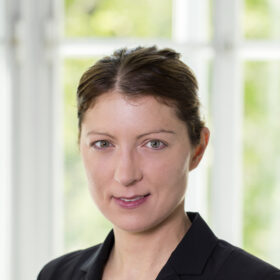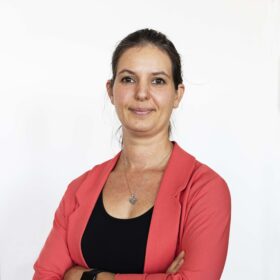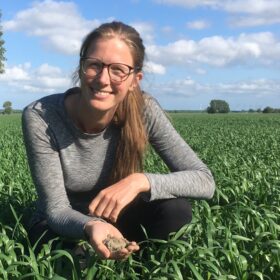Wissenschaftliche Veröffentlichungen
PEER-REVIEWED PUBLIKATIONEN
Haluza, D., & Jungwirth, D. (2023). Artificial Intelligence and Ten Societal Megatrends: An Exploratory Study Using GPT-3. Systems, 11(3), 120.
Jungwirth D, Haluza D. Artificial Intelligence and Public Health: An Exploratory Study. International Journal of Environmental Research and Public Health. 2023; 20(5):4541. https://doi.org/10.3390/ijerph20054541
Jungwirth, D., & Haluza, D. (2023). Artificial Intelligence and the Sustainable Development Goals: GPT-3s Reflections on the Society Domain.Preprints.
Gillerot, L., Landuyt, D., Oh, R., Chow, W., Haluza, D., Ponette, Q., Jactel, H., Bruelheide, H., Jaroszewicz, B., Scherer-Lorenzen, M., De Frenne, P., Muys, B., & Verheyen, K. (2022). Forest structure and composition alleviate human thermal stress. Global Change Biology, 00, 1– 13. https://doi.org/10.1111/gcb.16419
Capari, L.; Wilfing, H.; Exner, A.; Höflehner, T.; Haluza, D. (2022). Cooling the City? A Scientometric Study on Urban Green and Blue Infrastructure and Climate Change-Induced Public Health Effects. Sustainability. 14, 4929.
Steinparzer, M.; Haluza, D.; Godbold, D.L. (2022). Integrating Tree Species Identity and Diversity in Particulate Matter Adsorption. Forests. 13, 481
Reinwald, F.; Haluza, D.; Pitha, U.; Stangl, R. (2021). Urban Green Infrastructure and Green Open Spaces: An Issue of Social Fairness in Times of COVID-19 Crisis. Sustainability. 13, 10606.
Spörl, P.; Göndör, A.; Irrgeher, J.; Prohaska, T.; Trimmel, S.; Capari, L.; Haluza, D.; Scharf, B.; Kasper-Giebl, A.; Pitha, U. (2021). Development of a Mobile Module-Based Wind Tunnel for the Determination of Collection Efficiencies of Particulate Matter on Surface Structures. Sustainability. 13, 9565.
Haluza, D., Saustingl, M., Halavina, K. (2020). Perceptions of Practitioners on Telehealth and App Use for Smoking Cessation and COPD Care—An Exploratory Study. Medicina. 56(12), 698.
Cervinka, R., Schwab, M., Haluza, D. (2020) Investigating the Qualities of a Recreational Forest: Findings from the Cross-Sectional Hallerwald Case Study. Int J Environ Res Public Health. 17, 5. pii: E1676.
Muigg, D., Kastner, P., Modre-Osprian, R., Duftschmid, G., Haluza, D. (2020) Telemonitoring readiness among Austrian diabetic patients: A cross-sectional validation study. Health Informatics J 12:1460458219894094.
Haluza, D., Lang, S., Rogers, H., Harris, S., Jungwirth, D., Choudhary, P., Schuetz-Fuhrmann, I. & Stadler, M. (2019) The future of information technology and telecommunication in type 1 diabetes clinical care - results of an online survey BMJ Open Diabetes Research & Care, 7:1, p.e000917.
Haluza, D., Hofer, F. (2019) Exploring perceptions on medical app use in clinical communication among Austrian physicians: Results of a validation study. Health Informatics J 12:1460458219888420.
Klotz, J., Hackl, M., Schwab, M., Hanika, A., Haluza, D. (2019) Combining population projections with quasi-likelihood models: A new way to predict cancer incidence and cancer mortality in Austria up to 2030. Demogr Res 40:503–532.
Hofer, F., Haluza, D. (2019) Are Austrian practitioners ready to adopt mobile technologies? Results of a cross-sectional online survey. BMC Med Inform Decis Mak 19:88.
Wernhart, A., Gahbauer, S., Haluza, D. (2019) eHealth and telemedicine: Practices and beliefs among healthcare professionals and medical students at a medical university. Plos One 14:e0213067.
Muigg, D., Kastner, P., Modre-Osprian, R., Duftschmid, G., Haluza, D. (2019) Readiness to use telemonitoring in diabetes care: a cross-sectional study among Austrian practitioners. BMC Med Inform Decis Mak 19:26
Haluza, D., Schmidt, V‐M., Blasche, G. (2018) Time course of recovery after two successive night shifts: A diary study among Austrian nurses. J Nurs Manag 00:1–7.
Muigg, D., Kastner, P., Modre-Osprian, R., Haluza, D., Duftschmid, G. (2018) Is Austria Ready for Telemonitoring? A Readiness Assessment Among Doctors and Patients in the Field of Diabetes. Stud Health Technol Inform 248:322-329.
Blagec, K., Jungwirth, D., Haluza, D., Samwald, M. (2018) Effects of Medical Device Regulations on the Development of Stand-Alone Medical Software: A Pilot Study. Stud Health Technol Inform 248:180-187.
Naszay, M., Stockinger, A., Jungwirth, D., Haluza, D. (2017) Digital age and the public eHealth perspective: Prevailing health app use among Austrian Internet users. Inform Health Soc Care 19:1-11.
Jungwirth, D., Haluza, D. (2017) ICT and the future of healthcare: results of a multiscenario Delphi survey. Health Inform J 1460458217704256 [Epub ahead of print]
Moshammer, H., Simic, S., Haluza, D. (2017) UV-Radiation: From Physics to Impacts Int J Environ Res Public Health 14, 2
Ekmekcioglu, C., Haluza, D., Kundi, M. (2017) 25-hydroxyvitamin D status and risk for colorectal carcinoma and type 2 diabetes mellitus: A systematic review and meta-analysis of epidemiological studies. Int J Environ Res Public Health 14, 127.
Haluza, D., Jungwirth, D. (2016) ICT and the future of healthcare: aspects of pervasive health monitoring. Inform Health Social Care 1-11.
Blasche, G., Bauböck, V., Haluza, D. (2016) Work-related self-assessed fatigue and
recovery among nurses. Int Arch Occup Environ Health 12:12.
Blasche, G., Pasalic, S., Bauböck, V., Haluza, D., Schoberberger, R. (2016) Effects of rest break intention on rest-break frequency and work-related fatigue. Human Factors
doi:10.1177
Moshammer, H., Simic, S., Haluza, D. (2016) UV "Indices"-What Do They Indicate? Int J Environ Res Public Health 13(10) doi:10.3390/ijerph13101041
Haluza, D., Naszay, M., Stockinger, A., Jungwirth, D. (2016) Digital natives vs. digital immigrants: Influence of online health information seeking on the doctor-patient relationship.
Health Comm 1-8
Schrempf, M., Haluza, D., Simic, S., Riechelmann, S., Graw, K., Seckmeyer, G. (2016) Is Multidirectional UV Exposure Responsible for Increasing Melanoma Prevalence with Altitude? A Hypothesis Based on Calculations with a 3D-Human Exposure Model. Int J Environ Res Public Health 13, 961.
Haluza, D., Naszay, M., Stockinger, A., Jungwirth, D. (2016) Prevailing opinions on connected health in Austria: Results from an online survey. Int J Environ Res Public Health 13: 813.
Haluza, D., Blasche, G. (2016) Fatigue and insufficient leisure opportunities in older employees. Int J Occup Environ Med 58(7): e268-e274.
Haluza, D., Simic S., Moshammer, H. (2016) Sunbed Use Prevalence and Associated Skin Health Habits: Results of a Representative, Population-Based Survey among Austrian Residents. Int J Environ Res Public Health 13, 231.
Haluza, D., Simic S., Moshammer, H. (2016) Sun Exposure Prevalence and Associated Skin Health Habits: Results from the Austrian Population-Based UVSkinRisk Survey. Int J Environ Res Public Health 13:pii: E141.
Haluza, D., Simic S., Hötge, J., Cervinka, R., Moshammer, H. (2016) Gender aspects of recreational sun-protective behavior: Results of a representative, population-based survey among Austrian residents. Photodermatol Photoimmunol Photomed 32:11-21.
Haluza, D., Simic S., Schwab, M., Cervinka, R., Moshammer, H. (2015) Perceived relevance of educative information on Public (Skin) Health: Results of a representative, population-based telephone survey. Int J Environ Res Public Health 12:14260-14274.
Schaffler, Y., Reijman, S., Cardeña E., Haluza, D. (2015) Traumatic Experience and Somatoform Dissociation among Spirit Possession Practitioners in the Dominican Republic Cult. Med. Psychiatr 40:74-99.
Henschel, S., Le Tertre, A., Atkinson, RW., Querol, X., Pandolfi, M., Zeka, A., Haluza, D., Analitis, A., Katsouyanni, K., Bouland, C., Pascal, M., Medina, S., Goodman, PG. ( 2015). Trends of nitrogen oxides in ambient air in nine European cities between 1999 and 2010. Atmos Environ 117:234-241.
Haluza, D., Moshammer, H., Kundi M., Cervinka, R. (2015). Public (Skin) Health perspectives of gender differences in tanning habits and sun protective behaviour: A cross-sectional questionnaire survey. Wien Klin Wochenschr 127, 124-131.
Haluza, D., Jungwirth, D. (2015). ICT and the future of health care: aspects of health promotion. Int J Med Inform 84, 48-57.
Haluza D., Jungwirth, D. (2014). ICT and the future of health care: aspects of doctor–patient communication. Int J Technol Assess Health Care 30, 298-305.
Haluza, D., Cervinka, R. (2014) Public (Skin) Health and the publishing source bias of Austrian information material. Cent Eur J Med 9, 169-176.
Haluza, D., Kundi, M., Vogl, S. (2014). Sociodemographic Aspects are Associated with Breast Cancer Screening Behaviour of Female Patients: Results of a Cross-Sectional Survey. Gesundheitswesen 76, 500-507.
Haluza, D., Moshammer, H., Hochgatterer, K. (2014). Dust is in the air. Part II: Effects of occupational exposure to welding fumes on lung function in a 9-year study. Lung 192, 111-117.
Haluza, D., Schonbauer, R., Cervinka, R. (2014). Green perspectives for public health: a narrative review on the physiological effects of experiencing outdoor nature. Int J Environ Res Public Health 11, 5445-5461.
Haluza, D., Simic, S., Holtge, J., Cervinka, R., Moshammer, H. (2014). Connectedness to nature and public (skin) health perspectives: results of a representative, population-based survey among Austrian residents. Int J Environ Res Public Health 11, 1176-1191.
Haluza, D., Simic, S., Moshammer, H. (2014). Temporal and spatial melanoma trends in Austria: an ecological study. Int J Environ Res Public Health 11, 734-748.
Hochgatterer, K., Moshammer, H., Haluza, D. (2013). Dust is in the air: effects of occupational exposure to mineral dust on lung function in a 9-year study. Lung 191, 257-263.
Hutter, H.P., Haluza, D., Piegler, K., Hohenblum, P., Frohlich, M., Scharf, S., Uhl, M., Damberger, B., Tappler, P., Kundi, M., Wallner P, Moshammer H. (2013). Semi-volatile compounds in schools and their influence on cognitive performance of children. Int J Occup Med Environ Health 26, 628-635.
Henschel, S., Querol, X., Atkinson, R., Pandolfi, M., Zeka, A., Le Tertre, A., Analitis, A., Katsouyanni, K., Chanel, O., Pascal, M., Bouland C., Haluza D., Medina S., Goodman P. (2013). Ambient air SO2 patterns in 6 European cities. Atmos Environ 79, 236-247.
Pascal, M., Corso, M., Chanel, O., Declercq, C., Badaloni, C., Cesaroni, G., Henschel, S., Meister, K., Haluza, D., Martin-Olmedo P., Medina S. (2013). Assessing the public health impacts of urban air pollution in 25 European cities: results of the Aphekom project. Sci Total Environ 449, 390-400.
Perez, L., Declercq, C., Iñiguez, C., Aguilera, I., Badaloni, C., Ballester, F., Bouland, C., Chanel, O., Cirarda, F., Forastiere, F., Forsberg, B., Haluza, D., Hedlund, B., Cambra, K., Lacasaña, M., Moshammer, H., Otorepec, P., Rodríguez-Barranco, M., Medina, S., Künzli, N. (2013). Chronic burden of near-roadway traffic pollution in 10 European cities (APHEKOM network). Eur Respir J 42, 594-605.
Haluza, D., Cervinka, R. (2013). Perceived relevance of educative information on public (skin) health: a cross-sectional questionnaire survey. J Prev Med Public Health 46, 82-88.
Haluza, D., Kaiser, A., Moshammer, H., Flandorfer, C., Kundi, M., Neuberger, M. (2012). Estimated health impact of a shift from light fuel to residential wood-burning in Upper Austria. J Expo Sci Environ Epidemiol 22, 339-343.
Hohenblum, P., Steinbichl, P., Raffesberg, W., Weiss, S., Moche, W., Vallant, B., Scharf, S., Haluza, D., Moshammer, H., Kundi, M., Piegler B, Wallner P, Hutter HP. (2012). Pollution gets personal! A first population-based human biomonitoring study in Austria. Int J Hyg Environ Health 215, 176-179.
Keck, M., Haluza, D., Lumenta, D.B., Burjak, S., Eisenbock, B., Kamolz, L.P., Frey, M. (2011). Construction of a multi-layer skin substitute: Simultaneous cultivation of keratinocytes and preadipocytes on a dermal template. Burns 37, 626-630.
Keck, M., Haluza, D., Selig, H.F., Jahl, M., Lumenta, D.B., Kamolz, L.P., Frey, M. (2011). Adipose tissue engineering: three different approaches to seed preadipocytes on a collagen-elastin matrix. Ann Plast Surg 67, 484-488.
Kutalek, R., Wewalka, G., Gundacker, C., Auer, H., Wilson, J., Haluza, D., Huhulescu, S., Hillier, S., Sager, M., Prinz, A. (2010). Geophagy and potential health implications: geohelminths, microbes and heavy metals. Trans R Soc Trop Med Hyg 104, 787-795.
Keck, M., Haluza, D., Burjak, S., Eisenbock, B., Kamolz, L.P., Frey, M. (2009). Cultivation of keratinocytes and preadipocytes on a collagen-elastin scaffold (Matriderm®): First results of an in vitro study. Eur Surg 41, 189-193.
Wick, N., Haluza, D., Gurnhofer, E., Raab, I., Kasimir, M.T., Prinz, M., Steiner, C.W., Reinisch, C., Howorka, A., Giovanoli, P., Buchsbaum S., Krieger S., Tschachler E., Petzelbauer P., Kerjaschki D. (2008). Lymphatic precollectors contain a novel, specialized subpopulation of podoplanin low, CCL27-expressing lymphatic endothelial cells. Am J Pathol 173, 1202-1209.
Sonstige Veröffentlichungen
Haluza, D., Hochgatterer, K., Moshammer, H. (2016). Dust is in the Air – Berufsbedingte Schweißrauchexposition und Lungenfunktion. Atemwegs- und Lungenkrankheiten 42(9): 446-449.
Haluza, D. Cervinka, R. Green Public Health & Green Care: Gesundheitsfördernde Wirkung von Wald. Natur.Raum.Managment Journal 2015, 25(3); 4-5.
Haluza, D., Hochgatterer, K., Moshammer, H. (2014). Dust Is in the Air - Schweißrauchexposition und Lungenfunktion. Österreichisches Forum Arbeitsmedizin 1(1):4-9.
Haluza, D., Hochgatterer, K., Moshammer, H. (2014). Berufsbedingte Schweißrauchexposition und Lungenfunktion. Jatros Pulmologie&HNO 1(2):25-29.
Cervinka, R., Höltge, J., Pirgie, L., Schwab, M., Sudkamp, J., Haluza, D., Arnberger, A., Eder, R., Ebenberger, M. (2014). Green Public Health - Benefits of Woodlands on Human Health and Well-being [Greencare: Zur Gesundheitswirkung von Waldlandschaften]. Bundesforschungszentrum für Wald ISBN: 978-3-902762-32-0.
Haluza, D. (2012). In vitro research work in Austria. In: Advances of Atmospheric Aerosol Research (Interdiscplinary Perspectives). Verlag der österreichischen Akademie der Wissenschaften ISBN 978-3700173649
Hohenblum, P., Denner, M., Draxler, A., Lorbeer, G., Moche, W., Raffesberg, W., Scharf, S., Steinbichl, P., Uhl, M., Vallant, B., Weiß, S., Hutter, HP., Borsoi, L., Piegler, B., Wallner, P., Kundi, M., Haluza D. (2011). Schadstoffe im Menschen: Ergebnisse einer Human-Biomonitoring-Studie in Österreich. Umweltbundesamt ISBN: 978-3-99004-126-0.
Haluza, D., Neuberger, M. (2011). Die grüne Lunge auf dem Dach. Atemwegs- und Lungenkrankheiten Atemwegs- und Lungenkrankheiten 37(02):68-71.
Haluza, D. (2010) Feinstaubminderung durch Gebäudebegrünung. Galabau Praxis e-Journal 1(3):2-3.
Haluza, D. (2010) Feinstaubminderung durch begrünte Dächer. Jahrbuch Bauwerksbegrünung 1(1):14-16.
Neuberger, M., Moshammer, H., Haluza, D., Khatib S. (2009). Auf dem Weg zu einem rauchfreien Europa. Clinicum Pneumo 9 (1):14-15.

















